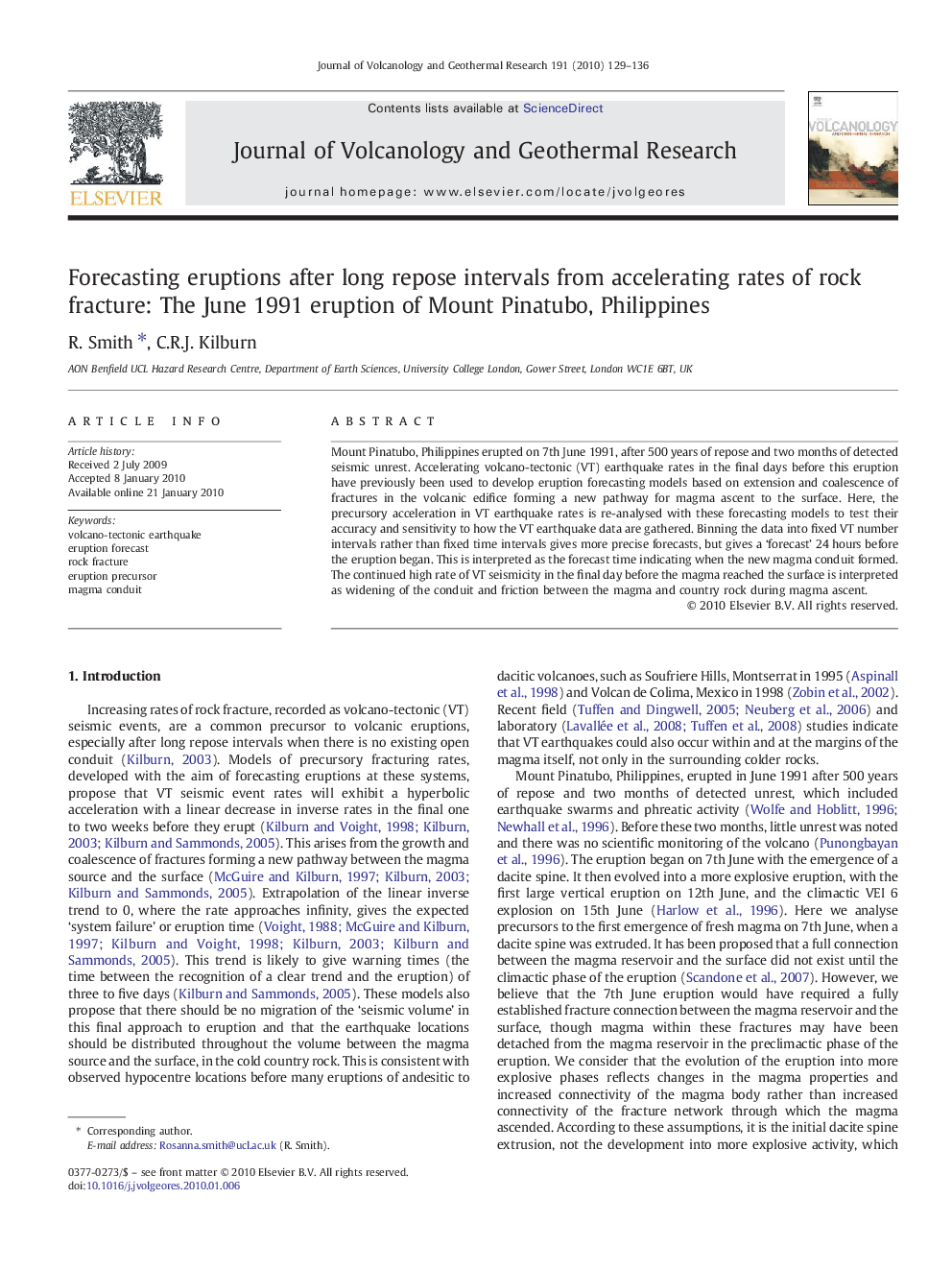| Article ID | Journal | Published Year | Pages | File Type |
|---|---|---|---|---|
| 4714135 | Journal of Volcanology and Geothermal Research | 2010 | 8 Pages |
Mount Pinatubo, Philippines erupted on 7th June 1991, after 500 years of repose and two months of detected seismic unrest. Accelerating volcano-tectonic (VT) earthquake rates in the final days before this eruption have previously been used to develop eruption forecasting models based on extension and coalescence of fractures in the volcanic edifice forming a new pathway for magma ascent to the surface. Here, the precursory acceleration in VT earthquake rates is re-analysed with these forecasting models to test their accuracy and sensitivity to how the VT earthquake data are gathered. Binning the data into fixed VT number intervals rather than fixed time intervals gives more precise forecasts, but gives a ‘forecast’ 24 hours before the eruption began. This is interpreted as the forecast time indicating when the new magma conduit formed. The continued high rate of VT seismicity in the final day before the magma reached the surface is interpreted as widening of the conduit and friction between the magma and country rock during magma ascent.
